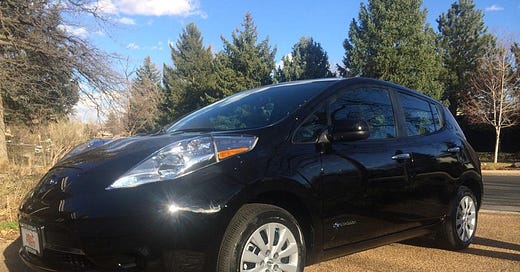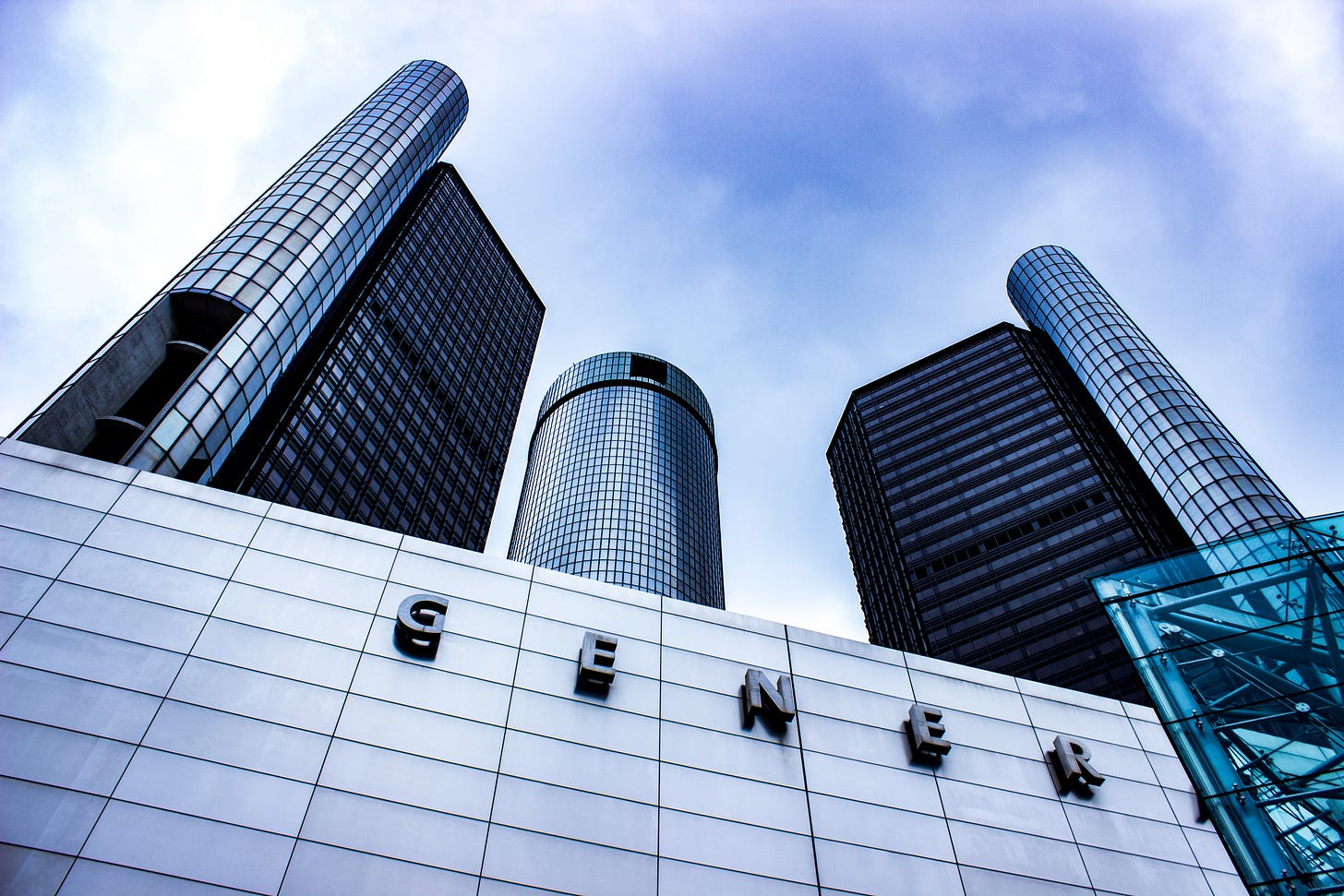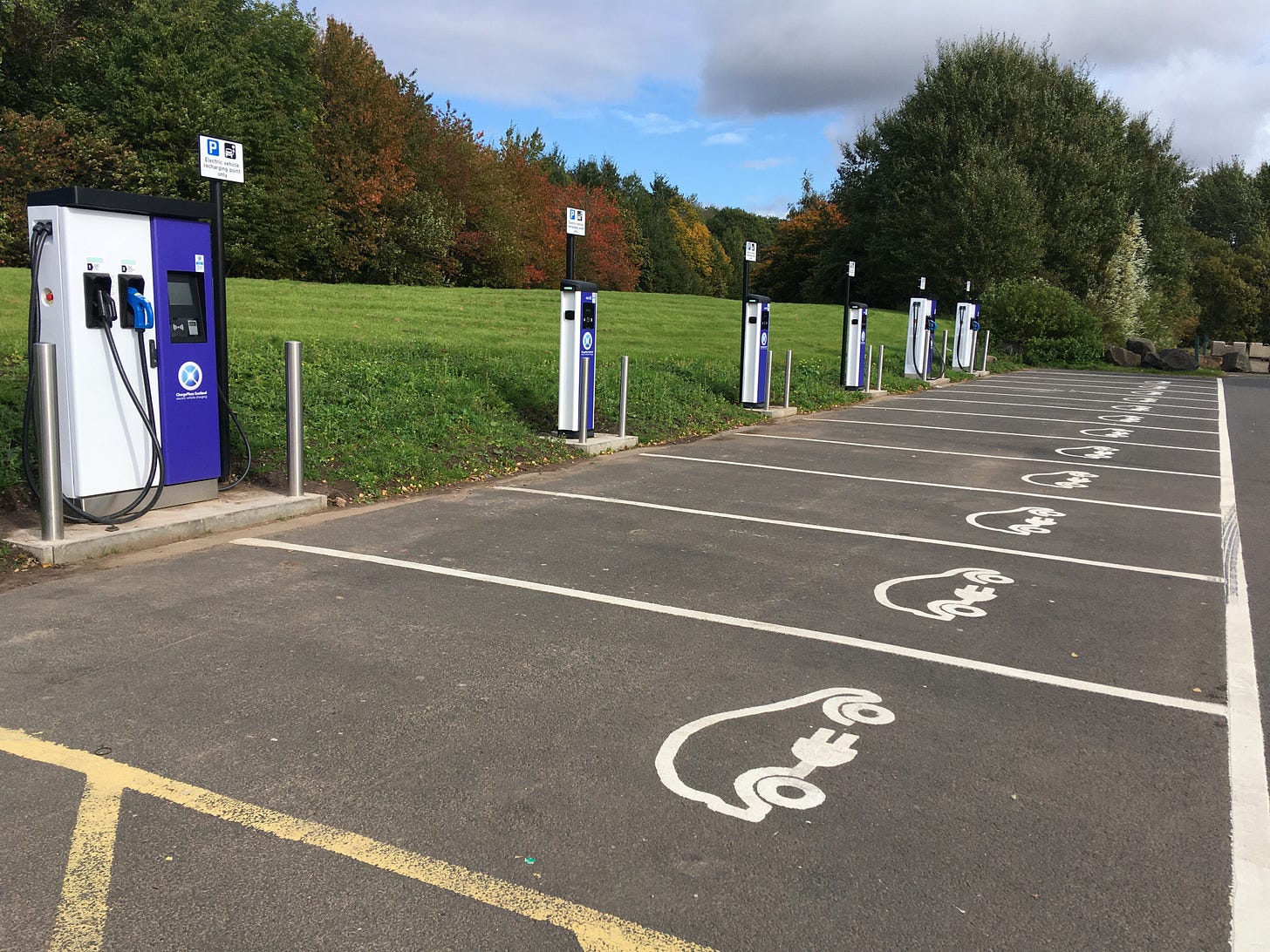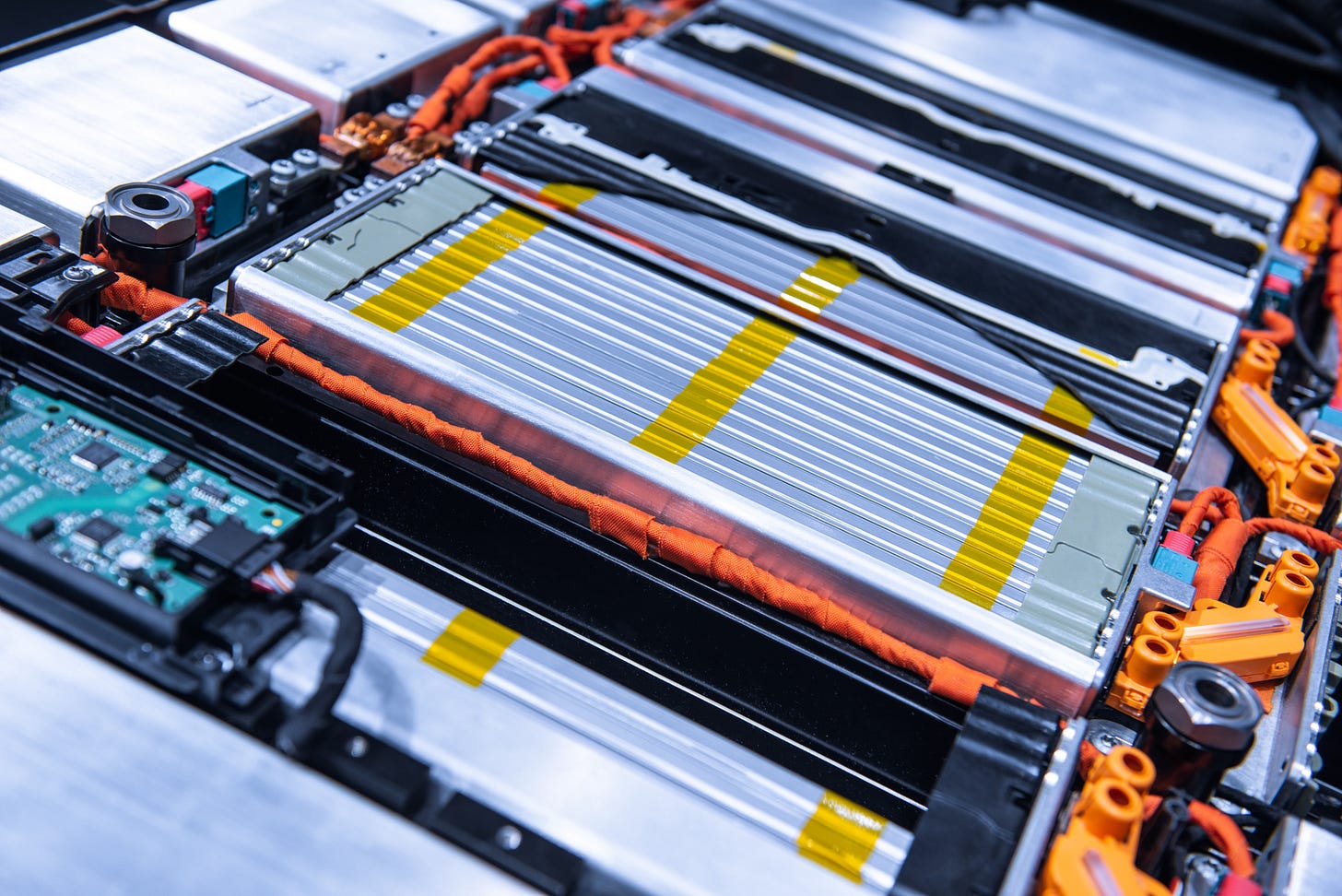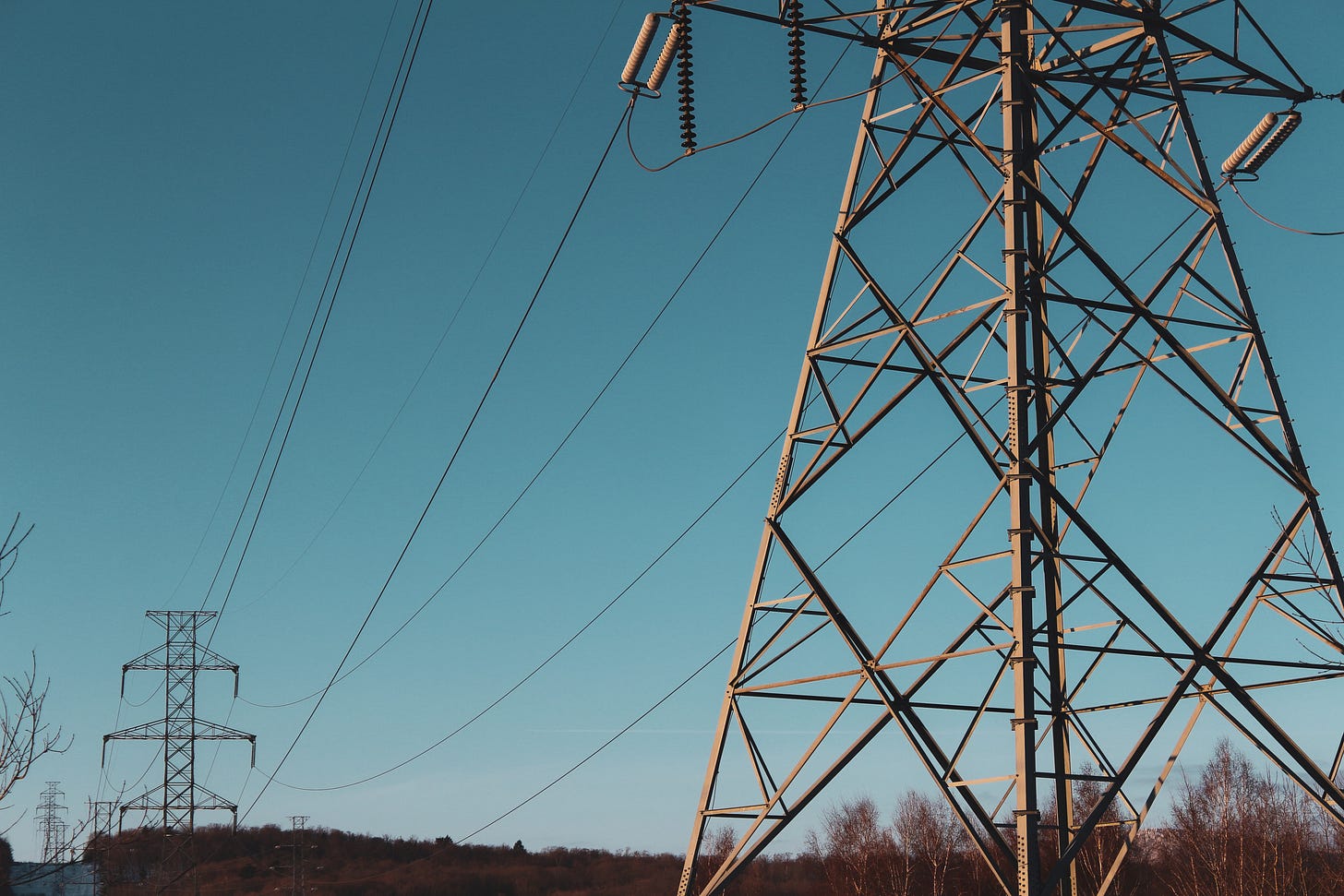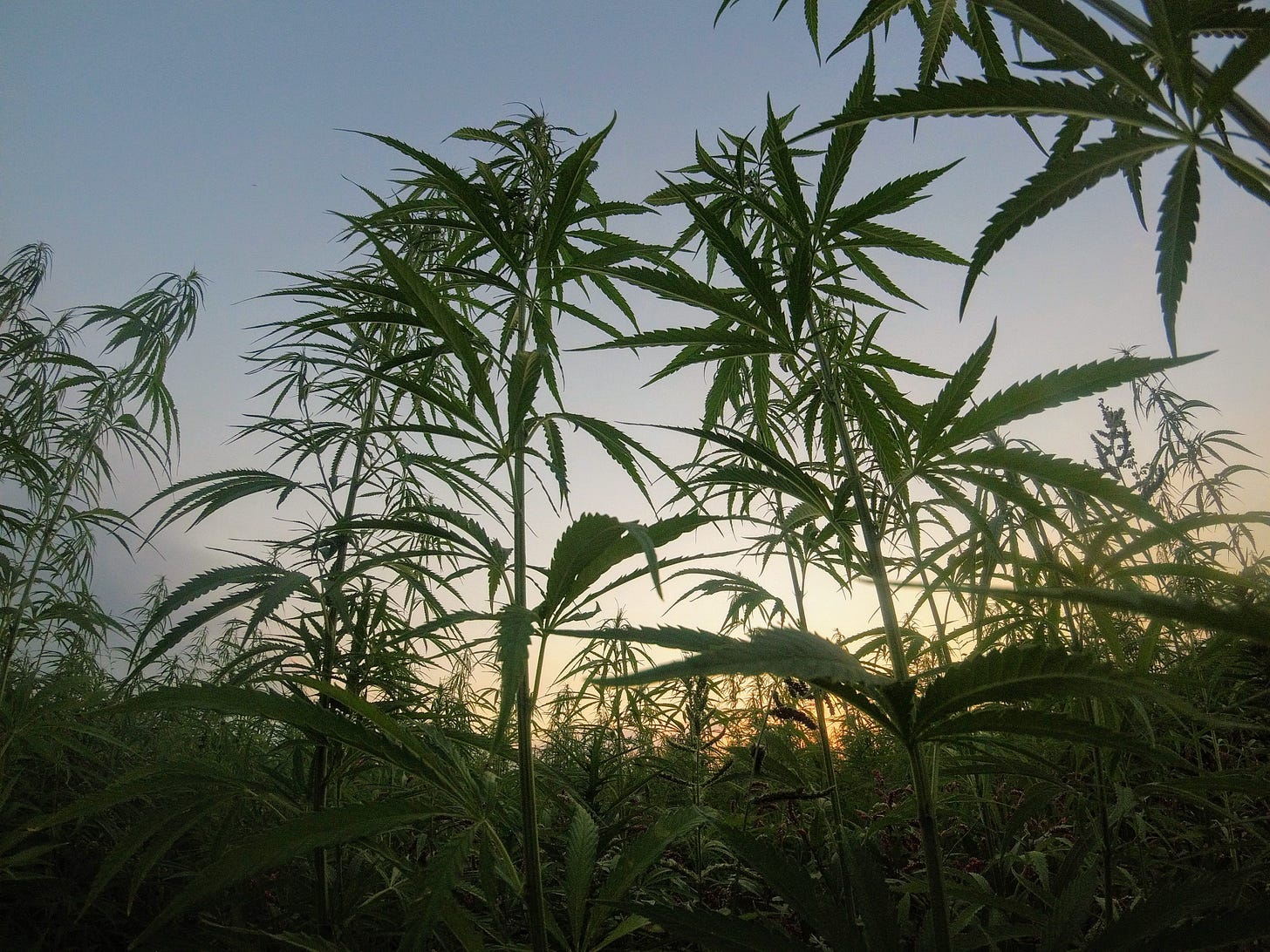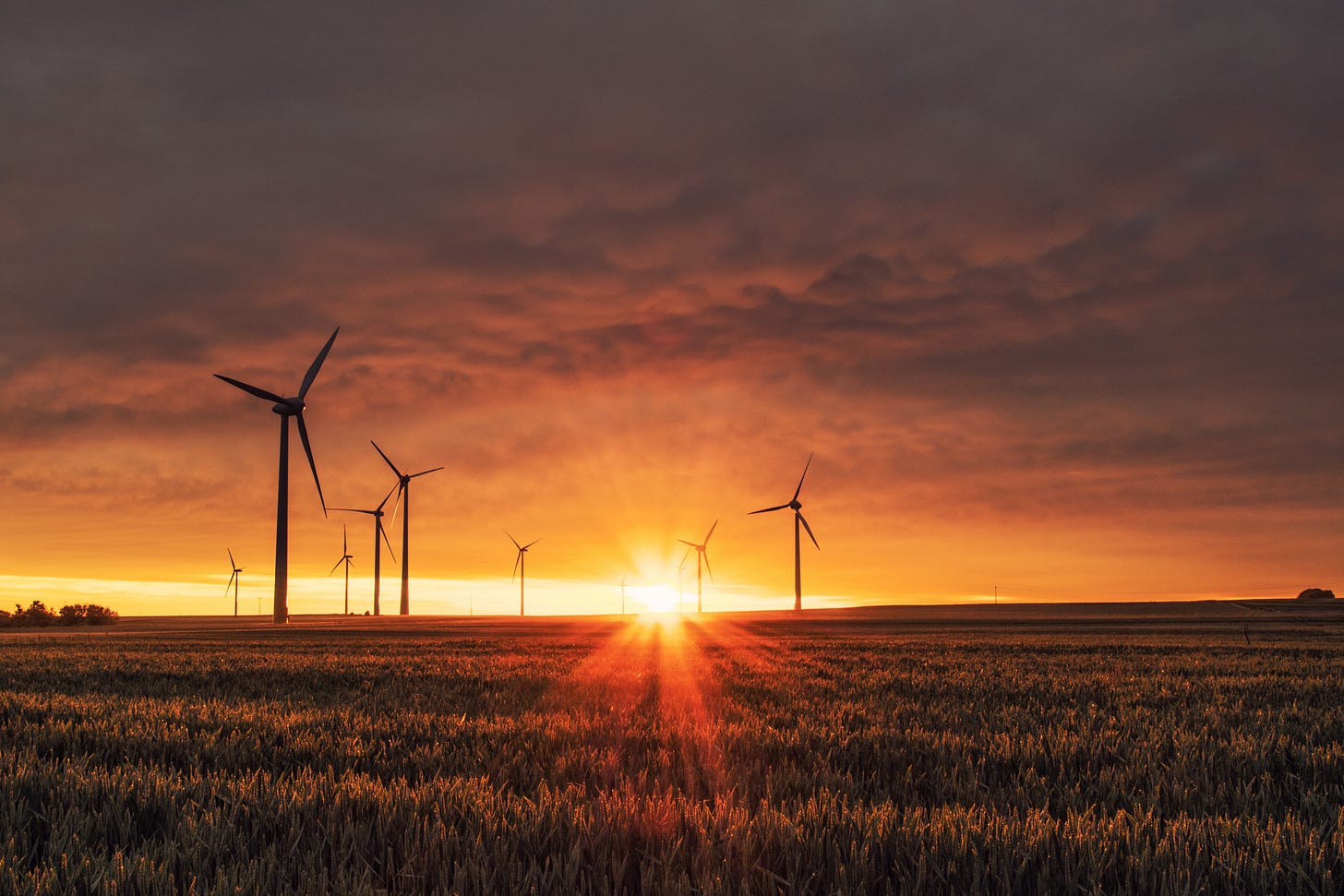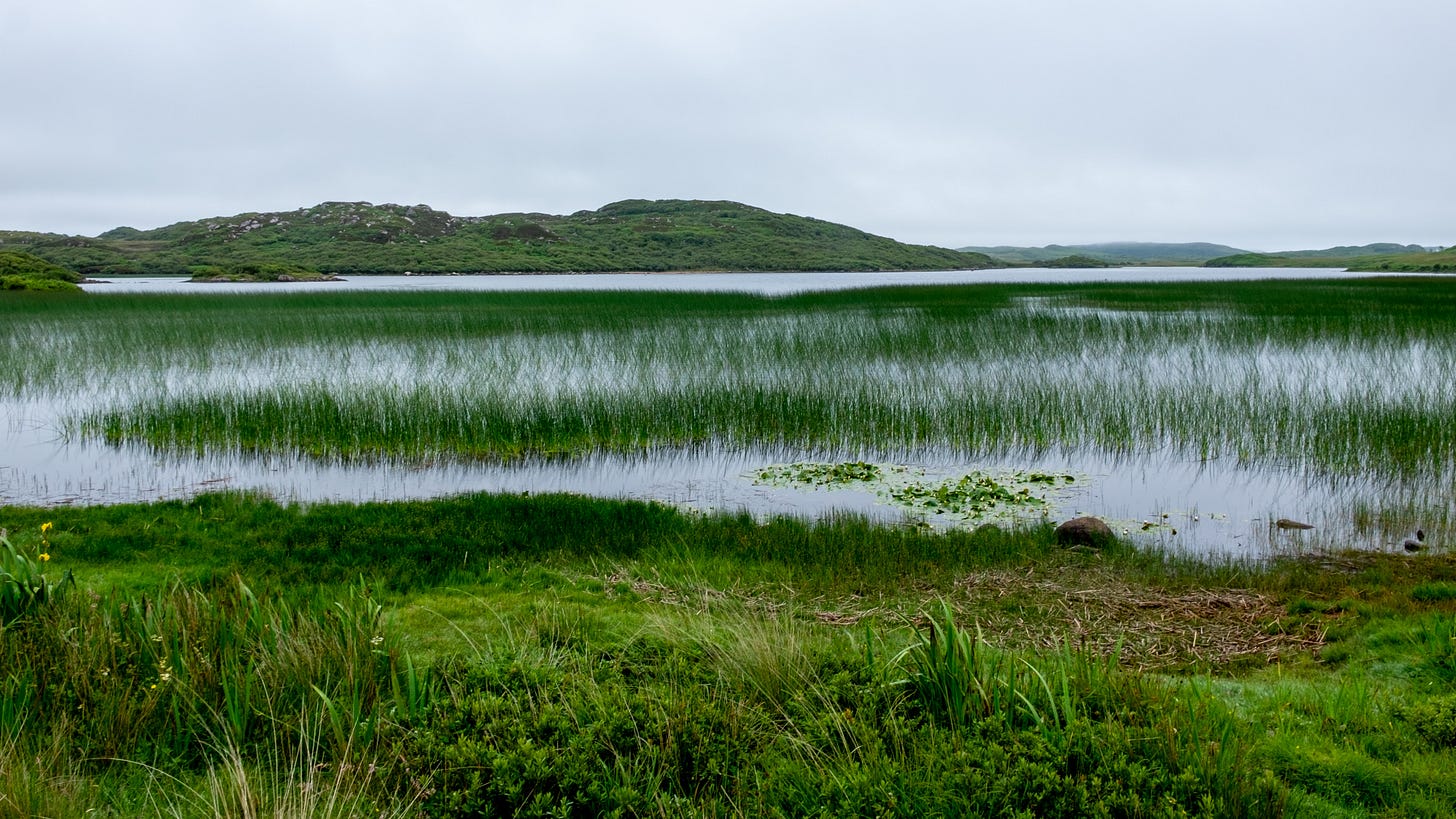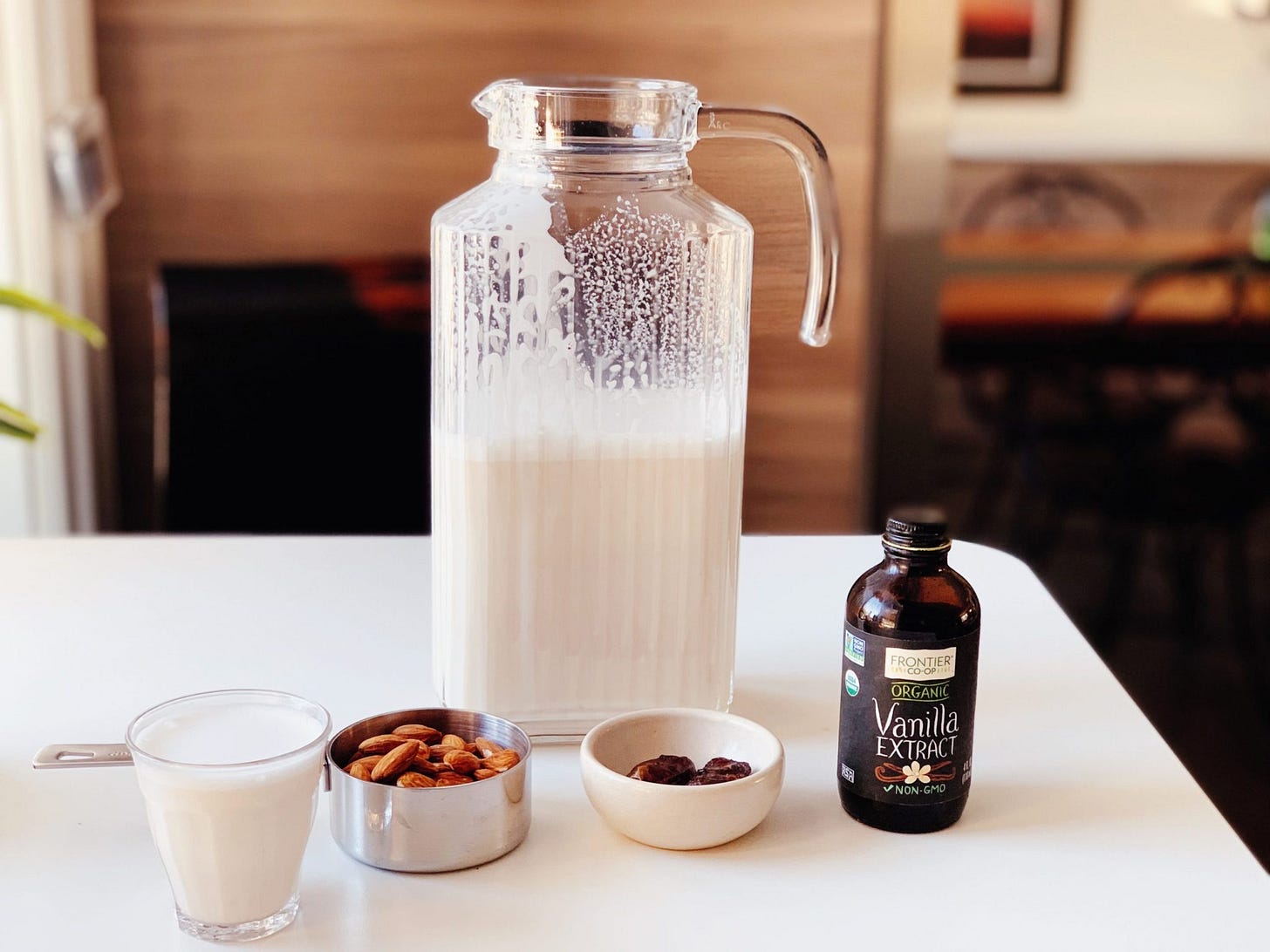EVs accelerate, hemp insulates, Civilian Conservation Corps begins, sea offers grains
We offer everything from analysis of the EV market (and buying tips) to a recipe for DIY almond milk to spotlights on superb environmental writing.
Happy Wednesday, friends.
Letter From the Forest this week brings you insights about the booming electric vehicle market. We champion national plans for a Climate Civilian Corps. Deliver a profile of an Idaho company creating insulation out of hemp fiber. Offer a fascinating story about a Spanish chef cultivating culinary grains from sea grass in the Mediterranean. And provide tips and a recipe for leaning into sustainability.
Some of the pieces, like the EV analysis, dive deep. Not interested in such granular coverage of electric cars? Skip ahead to other tidbits! I think we’ve got something for nearly everybody in this Letter From the Forest. And please do not hesitate to offer feedback. We want to know what’s working, and what is a flop.
Let’s go on a hike.
The EV Revolution Gains Adrenaline
Annie and I bought our first Nissan Leaf in early 2014, after Eric Skokan, a close friend and owner of Black Cat Organic Farm, urged us to consider an EV. He had bought one months before, and offered high praise for his Leaf.
If a Leaf worked for a farmer with two restaurants and loads of daily back-and-forth, we thought, surely our tidy work-from-home world could swing it.
I remember the first test drive. The car was fast and nimble; the driving experience outstanding. We leased the Leaf that afternoon, and have owned one ever since.
The car at the time was so novel, and we were so keen about it, that I posted a photo of the small black car on Facebook. Friends expressed something verging on astonishment about our crazy new vehicle. Whenever we were out driving we exchanged happy waves with fellow Leaf owners.
We now are on our third Leaf. The fourth is on the way. Astonishment and waving is over.
With our youngest daughter headed to college in the fall, we plan on becoming a one-car family. As mountain-loving Coloradans, that car must be 4WD. We will trade in our existing front-wheel-drive Leaf for an EV built to handle Colorado’s sometimes challenging roads.
But this time, we will consider non-Nissan options. Auto makers now are rushing into the EV market. Market research firm Auto Pacific anticipates between 90 and 100 new EVs on the market by 2030. Soon, we should have far more choices, including 4WD EVs.
EV Energy Mounts As GM Makes Huge Announcement
You probably encountered news last month that General Motors plans to phase-out all gas and diesel cars by 2035. If you missed it, you’ll hear more during the Super Bowl, when the company airs a pro-EV ad starring Will Ferrell.
Today, fossil-fuel-powered vehicles comprise 98 percent of the auto maker’s sales. In the interim, anticipate the world’s fourth-largest auto maker to routinely introduce new EVs to its lineup.
Meanwhile Ford, the fifth-largest auto manufacturer, plans for a line of electric transit vehicles this year and a battery operated version of its popular F-150 pickup truck in 2022. Tesla sales continue to climb. Michigan-based startup Rivian is set to introduce its line of “electric adventure vehicles,” including a pick-up truck, in June. And myriad other auto makers, from BMW to Volkswagen to Toyota, are working on new EVs.
Regulatory moves in places like California, where the governor set a goal of eliminating sales of new combustion engines in just 15 years, make the drive for EV cars even more urgent for auto makers.
The auto market is evolving rapidly. According to Bloomberg New Energy Finance, in just four years, in 2025, EVs should command 10 percent of global passenger vehicle sales. Today, they account for less than 1 percent of cars on American roads, and with the exception of Tesla, domestic EV sales are not exactly roaring. The Nissan Leaf, for example, had its best year in 2014 . But those sluggish sales are bound to change. Investment bank RBC Capital expects EVs to reach 43 percent market penetration by 2035.
EVs Can Take Over the World, But Only If…
For EVs to triumph, which means gas- and diesel-fueled cars will fade, several things must happen.
EV plugs must become more widespread
Battery production needs to ramp-up
Utilities should plan for expanded demand for electricity
Plugs On the Way
Good news on the plug front: President Biden aims to help build 500,000 new public chargers by 2030. The plan is complicated. Public spending and coordination with other governments is required. It is an excellent goal.
Where should the chargers go? A recent MIT study concluded new chargers would most benefit the expansion of EV cars if highways included more high-speed charging stations and residential streets just offered more charging options. As so many people live in apartments and condominiums (which don’t always offer EV charging options), ensuring they have charging plugs is vital.
The Battery Race
With the battery production issue, questions rise from many quarters. What country will dominate production? Where will manufacturers find the raw ingredients, such as cobalt and lithium?
For now, the answer to both questions points towards China. The country dominates battery production (70 percent of the world’s litihium-ion batteries), and mines it controls contain key battery-making ingredients.
Battery production in the United States, however, is expected to ramp up by a factor of six during the decade, according to Benchmark Mineral Intelligence. One promising project pairs South Korean battery manufacturer LG Chem with General Motors for a battery production plant in Ohio.
California’s SilaNano, which is developing a powder for batteries that will ultimately lower EV costs, recently raised $590 million in private funding to expand, which includes building another factory and loads of new high-paying jobs. The investments helped turn SilaNano into a $3.3 billion company.
As increasingly more companies make batteries, expect shortages in minerals needed for battery production. Prices for cobalt, most of which is mined in the Democratic Republic of Congo, have surged 20 percent since Jan. 1. Manufacturers use the blue metal a stabilizer in batteries, and to protect batteries from corrosion.
One Louisville, CO startup backed by Ford, Hyundai and BMW, Solid Power Inc., is building a solid-state battery using equipment and procedures similar to those used in the manufacture of lithium-ion batteries. Should solid-state batteries become available for EVs, they likely will charge faster, hold more power and last longer than lithium-ion batteries.
Another company, QuantumScape in San Jose, also is in the race for a solid-state battery. The company, backed by Volkswagen and Bill Gates, held a “battery day” for investors, in which it touted progress.
Utilities Prepare For Amped Demand
On the utility side of the equation, they naturally are excited about the prospect of far more demand for their product — electricity. But they need to prepare for the incoming tide.
Studies suggest that if all cars became EVs, about 25 percent more electricity would be required. Handling that kind of growth requires new power plants and investments in networks.
One study by the Rocky Mountain Institute called Steep Climb Ahead — How Fleet Managers Can Prepare for the Coming Wave of Electrified Vehicles, found that switching fleets to electric would require investments beyond the vehicles themselves. Among other things, one transit company’s adoption of 100 electric buses could demand the construction of new substations. It could translate into millions of dollars of investment.
An early adopter of electric fleets? The federal government. One of the climate-related measures President Biden announced last week was his intention to electrify the federal fleet of more than 600,000 vehicles.
As more and more people plug instead of fill up, utilities will likely encourage more creative approaches towards when, exactly, to plug in.
Southern California Edison, for example, encourages EV owners to charge up during the day, when solar energy is widespread. Day chargers pay much lower rates than those who plug their cars in while they sleep at night.
Utilities are even exploring technologies that let them control the chargers — individual cars get charged based on directions from car owners about when they next need the car, and when electricity is abundant and most affordable.
Join the EV Car Revolution
Transportation represents about one-third of greenhouse gas emissions every year in the United States. Widespread adoption of EVs is critical for ratcheting-back that volume of C02 emissions.
Most utilities today derive their power from burning fossil fuels, which means car-charging continues to rely mostly on greenhouse gas-emitting activities. But EV motors are much more efficient than internal combustion engines, meaning they require less energy input to move. They clearly offer environmental advantages over gas- and diesel-fueled cars.
And as utilities continue to deepen their embraces with more sustainable forms of energy, such as solar and wind, the climate impact of transportation continues to decline.
A recent Carnegie Mellon study found that an emissions-free grid combined with 84 percent of all vehicle travel being electric would lead to a transportation emissions decline of 90 percent.
It’s time to consider buying an EV, yes?
EVs are affordable, in part due to federal and state tax credits. The feds offer a credit of $7,500. Coloradans can claim an additional $5,000. Together, the incentives for new cars can reduce the cost of an EV by as much as 40 percent. Used cars used to qualify for the credits; we took advantage of it a few years ago. Unfortunately, credits no longer apply towards used EVs.
We purchased our EVs at the Nissan dealership in Boulder, one of the highest-volume Leaf outlets in the United States. If you shop there, do ask for Nigel. We also bought a used one at greeneyedmotors.com, a fantastic resource for the EV-curious. While the credits no longer apply for used EVs, the prices remain outstanding. A review of the inventory page on the site today (February 2, 2021) reveals things like a 2016 Leaf with 26,500 miles for $11,000 and a 2017 BMW with 26,000 miles for $18,750.
One of the beautiful things about EVs, in addition to their pep and zip and divorce from fossil fuels? Their relative lack of parts, and their reliability. For somebody like me who has no idea what an alternator is, or what a timing belt does, EVs are ravishing spectacles of technology. Things don’t break! Never again will I receive a call like this: “Mr. Brown? OK, well the crankshaft and cylinder head are a mess, and your valves need to be replaced. I’m afraid that comes to $1,946.”
In many ways, they are glorified golf carts. The whole thing makes buying a used EV much less daunting than a used assembly of thousands of parts.
To stay on top of EV news and developments, including new EV releases, bookmark https://insideevs.com. It is invaluable.
Keeping the House Warm — With Weed!
A frisson of exhilaration routinely charged my market visits when CBD tinctures, lozenges and salves first began appearing on shelves, somewhere around 2016. These weren’t sad displays of weedy products in dreary dispensaries, which quickly grew familiar in Colorado after the state legalized recreational cannabis sales in 2014.
Instead, the CBD-bearing shelves rose in shiny stores owned by corporations, places packed with MBAs and strict rule followers. While CBD products derived from hemp remained technically illegal for over-the-counter sales (they remain so, due to complex regulatory reasons), some mainstream gatekeepers decided the risk was negligible.
And then came CBD mania. Wild-eyed people ensorcelled by greed launched myriad CBD companies. I worked with a few of them. The messaging from CBD World grew absurd.
Our full-spectrum CBD is great for fatigue and energy! Depressed? Cheer up — with CBD! You’ve got rheumatoid arthritis, you suffer from heart disease, your daily trail running leads to constant joint and muscle pain. We’ve got the perfect CBD solutions for you!
The cannabinoid may be useful for certain medical conditions; science eventually will tell us more. It is not good for everything.
The plant from which non-dispensary CBD is derived, however, is turning into an immensely versatile and useful resource. Hemp provides fabrics and building materials and paper. Food and biofuels. Industry experts point towards thousands of uses for hemp.
Like CBD, it’s not good for everything. But unlike CBD, hemp at least offers a vast inventory of practical and proven applications.
As a sustainability nerd, its potential in the construction trades excites me. For now, builders use hemp as replacements for concrete and insulation.
Idaho’s Hempitecture offers both products.
To read more about Hempitecture, read my story in Cairns Magazine.
Making Climate Healing Viral with Civilian Climate Corps
Part of President Biden’s roll-out of climate-related initiatives last week included announcing a new Civilian Climate Corps, modeled after the Civilian Conservation Corps that President Franklin D. Roosevelt began in 1933, during the Great Depression.
According to the announcement, the Corps will “put a new generation of Americans to work conserving and restoring public lands and waters, increasing reforestation, increasing carbon sequestration in the agricultural sector, protecting biodiversity, improving access to recreation, and addressing the changing climate.”
Thrilling, right? We will stay on top of CCC developments on LFTF. Read more about it, and how it might work, with this Fast Company story.
Plant Yourself
This week’s spectacle of colorful, engaged environmental writing offers a profile of Ángel León a chef-turned-sea-farmer living in El Puerto de Santa Maria, a Spanish port town across the by from Cádiz.
The Time Magazine piece from last month explores the chef’s rise to fame — he made things like spot-on blood sausage from mussels and fettucine from boiled hake — and his subsequent embrace of cultivating sea grass as a source of grain and an engine for coastal environmental renewal. The perennial grains grow rapidly and offer bounties of fiber and omega-3 fats.
The writing and storytelling are superb.
Some key quotes:
The first thing you notice is the texture: taut-skinned and compact, each grain pops on your tongue like an orb of caviar. It tasted like the love child of rice and quinoa with a gentle saline undertow.
With more than 5,000 hectares of estuaries and abandoned salt beds strewn across the region, if Leуn and team have their way, Cбdiz could soon be home to one of the largest eelgrass meadows on the planet.
They have all the equipment of a terrestrial plant—roots, stems, rhizomes, leaves, flowers, seeds—but they thrive in under-water environments. Seagrasses like Zostera marina are eco-system engineers: the meadows they form along coastlines represent some of the most biodiverse areas in the ocean, playing host to fauna (like seahorses, bay scallops and sea turtles) that would struggle to survive without seagrass.
As Leуn and team refine the conditions for large-scale cultivation, they hope to facilitate its growth along coastlines around the world—Asia, North America and, above all, across the Straits of Gibraltar in Africa—turning millions of hectares into a source of food, protection against erosion and a weapon against climate change.
For all the talk about the Amazon being Mother Nature’s lungs, rain forests are only the fifth most efficient carbon sink on the planet. Seagrass meadows are second only to tundra in their ability to sequester carbon, absorbing carbon up 35 times faster than the same area of tropical rain forest.
Harm-less: Almond milk from scratch saves money, boosts flavor and eliminates plastic
Years ago we began messing with alternatives to dairy. Alternative cheeses uniformly sucked when we began exploring, and still lag far behind cheese made from cow, sheep and goat milk. That said, they are getting better.
But dairy-free milk? Yogurt crafted from things like oat and cashew milk? We found that some of those were excellent just five years ago, and today we generally turn to alternatives to dairy for milk and yogurt.
The damn plastic-coated milk cartons, however, irritated us. Same with the plastic yogurt tubs.
Surely, we thought, we could make our own dairy-free milk and yogurt.
Our quest didn’t take long. It turns out making at least some dairy-free milks is ridiculously easy.
For now, let’s explore making almond milk. We make fresh batches of it every week. Scratch almond milk saves money (lots of money). It tastes far better than store-bought almond milk. And it eliminates plastic waste. A three-fer!
One sip of homemade almond milk and you’ll never go back to store-bought. And you won’t believe how simple it is.
1/2 cup raw almonds, soaked overnight in cool water
5 cups filtered water
Pinch sea salt
1-2 whole dates
1 teaspoon vanilla extract
Add soaked almonds, water, salt and any add-ins (such as dates for sweetness, and vanilla for flavor) to a high-speed blender, and blend until creamy, anywhere from 1 to 2 minutes.
Strain milk, using a nut milk bag or simply a strainer with a fine weave. You can even pour it over a dish towel (over a bowl), gather up the corners, and squeeze out the milk.
Keep almond milk in a pitcher or some other container, and store in the refrigerator. Homemade almond milk lasts four or five days, before starting to turn bitter.
